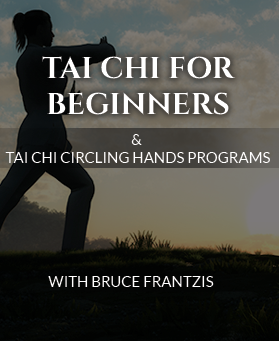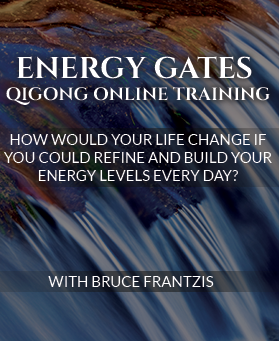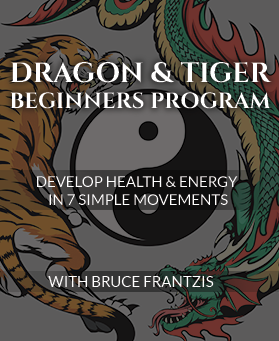The solidly built Huang Hsi I was about the same height as the average American man, but tall for a native Taiwanese. His strength and abundant chi—natural and trained—combined with his huge, immensely sensitive hands, made him a superb healer in Chinese qigong (chi gung/chi kung) therapeutic bodywork (qigong tui na) and osteopathy. He came from a farming background and consequently had a strong affinity for living things, including plants and herbs. He loved to cook for people and was one of the few men I ever met who could prepare food with medicinal herbs and make the dishes taste good.
Very flexible physically, Huang had an endearing habit of squatting flatfoot on a tiny stool while talking on the telephone. Although he dressed in modern clothes, he was a very old-fashioned, conservative Chinese, with a heart of gold. Even by Chinese standards, he was an eccentric. For several years while we were roommates, Huang lived from a rural sense of time based on the seasons. He did not pay much attention to clocks, which caused me, as well as many others who knew him, extreme frustration.
Eventually, we all gave in to Huang’s sense of the natural flow of events unfolding, ignoring our own schedules and expectations. When Huang and I were together, he was just learning to use Mandarin naturally, rather than his native Taiwanese, which I did not know. Although his Mandarin eventually
improved, at that time it made for a linguistic and cultural comedy of errors. These communication problems could have made the situation intolerable if we had not had such a natural affection for each other, and I had not had such immense respect for his accomplishments. I also enjoyed his sense of humor.
Besides being an exceptional internal martial art adept, Huang was without a doubt one of the most gifted qigong therapists and bodyworkers I had met during all my time in the Orient. I lived and studied with Huang Hsi I in 1978 and 1979. At that time, he was one of Hung I Hsiang’s most powerful hsing-i students. Huang, before, during and after his time with Hung, had quietly studied with some of Taiwan’s most adept old internal masters from the Mainland. During those years when we were roommates, Huang—of all of Hung’s students—clearly had the finest and most subtle command of Rou Shou that I had ever seen.
Huang introduced me to spinal qigong and was a major influence in my qigong tui na training. In my second long trip to Taiwan, I studied much less regularly with Hung I Hsiang, filling in many critical gaps with Huang. Huang took me on as his younger brother, avoiding much of the strange Confucian structure of disciplehood that culturally would have made life immensely complicated for me as a foreigner. Huang’s bagua and hsing-i skills were very high, and his grasp of Taoist internal qigong was of a rare level for such a young man.
Huang’s method of teaching was that of the traditional school: Students must struggle to find the essential meaning of an internal technique from information imparted, but not precisely spelled out. Huang was extremely talented at instructing without being directly explicit, which is one of the classic Taoist methods of teaching. It was primarily through Huang’s teaching that I was able to completely understand much of what Hung I Hsiang taught. Huang also was the first to make me understand the importance of the Taoist method of working with the spinal vertebrae and cerebrospinal system.
It was the personal applications of many of his techniques that allowed me to begin recovery from the severe back injuries that I sustained in a car accident (cracked vertebrae and ripped soft tissue) in 1982. Without the life-giving spinal qigong knowledge that Huang Hsi I, Liu Hung Chieh and other Taoist chi masters had taught me, I would never have walked again after that crash.
Huang’s methods helped me greatly with the continuous pain I suffered in the immediate aftermath of the accident. Later, the Old Yang style tai chi of Lin Du Ying helped heal my upper back and neck and finally the Wu style tai chi taught by Liu cured my lower back.
Huang was a specialist in the standing qigong postures of Taoism, chi work of hsing-i, and the methods of manifesting light in the body through standing and spontaneous movement qigong. Huang took his knowledge of chi and the hand movement work of bagua and the internal martial arts, and directly moved it into the beneficial arena of therapeutics and healing. He started and developed a highly successful practice as a qigong doctor.




0 Comments